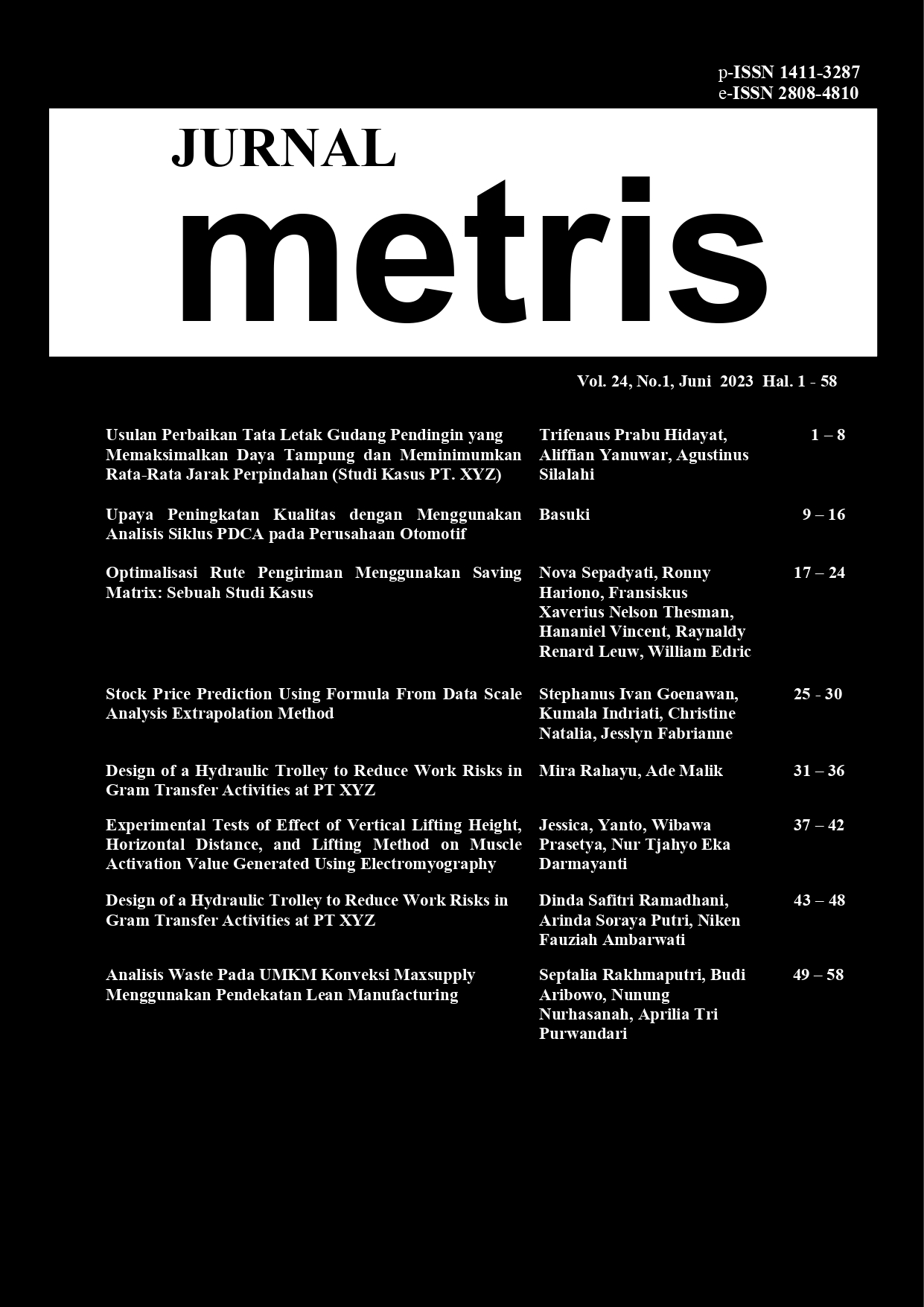Upaya Peningkatan Kualitas dengan Menggunakan Analisis Siklus PDCA pada Perusahaan Otomotif
DOI:
https://doi.org/10.25170/metris.v24i01.4293Keywords:
PDCA , Plan-Do-CheckAction, continuous improvement, kaizen, defectsAbstract
Abstract
In this era of globalization, the competition in the automotive industry is getting more challenging, and consumer demands are also continually increasing. This is what encourages the automotive industry to make products as perfect as possible, one of which is minimizing the level of defects in their production lines. By reducing defects, the process will flow faster without going through the repair process. But in actuality, there are still defects found in the poses of its production. This research was conducted in the welding process in the automotive industry. This paper aims to identify defects in the welding production process in the automotive industry. Then analyze the most dominant defect, find the root cause, and improve. This study uses the PDCA cycle method. The PDCA cycle is a continuous improvement model consisting of four sequential components, Plan, Do, Check, and Action. The results of this study identified five major defects in the welding process: hole nut not centered, dents, NG stud bolts, NG parts, and non-stick spots. The average defect per month is 110 defects, and the dominant defect is the non-centered nut hole of 63.8 defects (58%). The root cause is when the part setting stopper position is unstable. The improvement made is adding a locator pin cylinder hole nut to stabilize the position. The results of this improvement can reduce welding defects to 58.5 defects per month, and the average defect hole nut is not centered by 3.5 defects (6%). So the PDCA cycle is very effective in efforts to improve product quality.
Keyword : PDCA, Plan-Do-Check-Action, continuous improvement, kaizen, defects.












